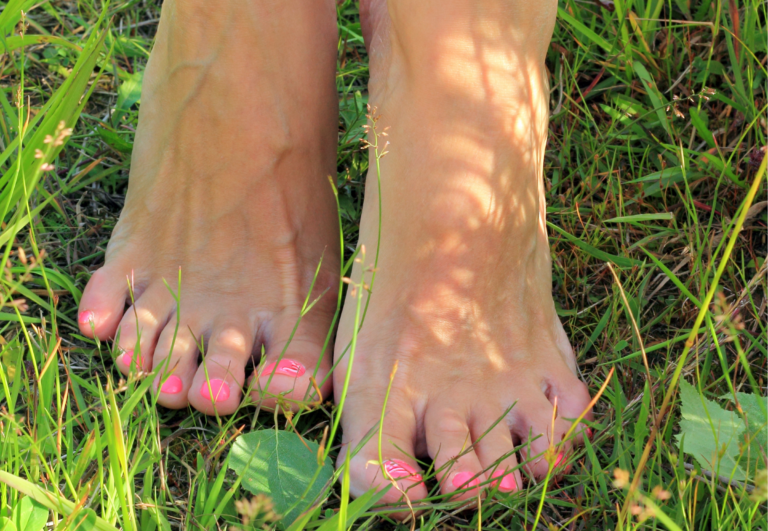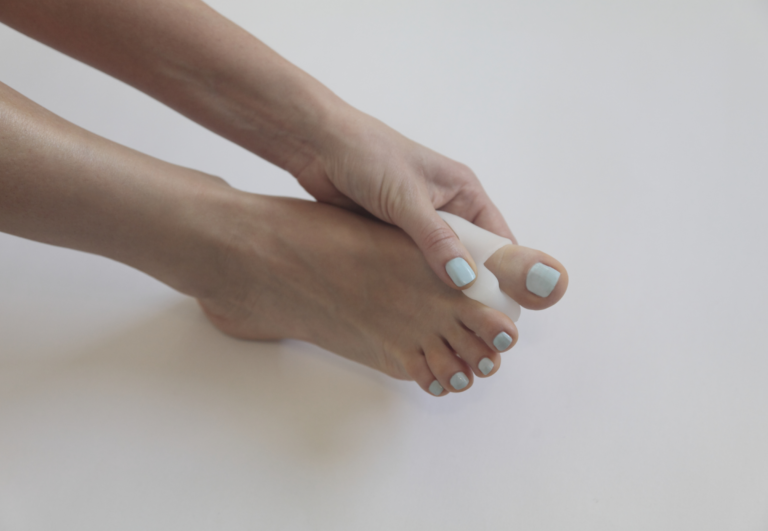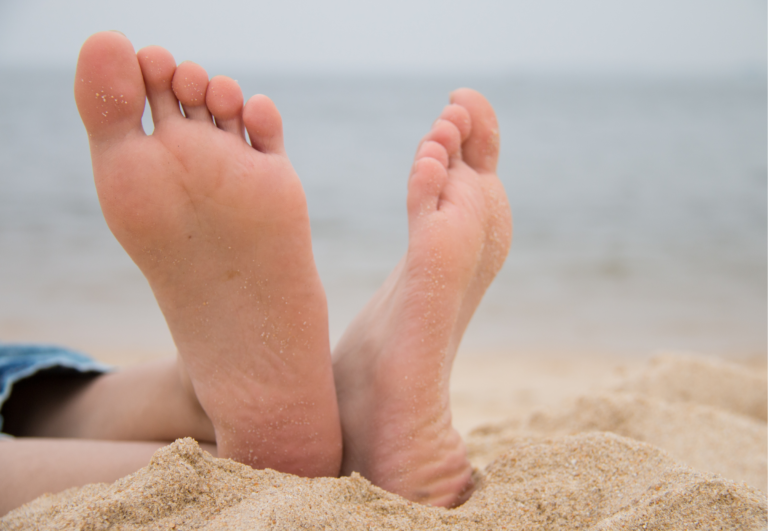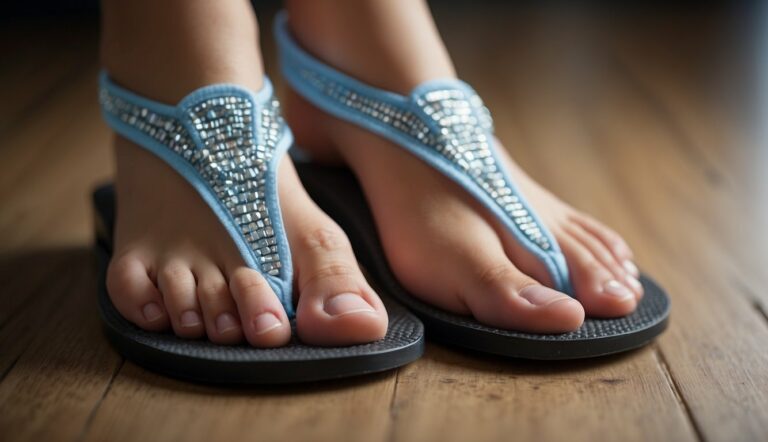Footwear for Healthy Feet: Choosing the Right Shoes for Optimal Foot Health
Selecting the right footwear is crucial for maintaining healthy feet. In my experience with toe spacers and foot health, comfort and support should be the focus. A good shoe provides a stable base for your foot’s natural shape and movement, without squeezing or restricting your toes.
Proper fitting is non-negotiable for foot health. Shoes should have a wide toe box to accommodate your feet comfortably and allow for natural toe spread. The soles should be flexible yet supportive, allowing for a slight bend at the ball of the foot.
As someone who appreciates the benefits of toe spacers, I understand the importance of not cramping the toes. Ensuring your shoes have enough room for toe movement can make all the difference in promoting foot comfort and preventing potential issues. Remember, supportive strapping — be it laces, straps, or Velcro — is key to keeping your footwear secure without cutting into your mobility.

Understanding Foot Health
In this section, we’ll explore the structure of the foot and some of the most frequent foot problems people encounter. I have a good grasp on toe spacers and how they can contribute to maintaining foot health.
The Anatomy of the Foot
The foot is a complex structure composed of bones, joints, muscles, and tendons. There are 26 bones in each foot, forming two arches: the longitudinal arch running the length of the foot and the transverse arch across its width. These arches are key to balance and walking. While I’m not a doctor, I understand that a well-supported arch can prevent many common foot issues.
Common Conditions Related to Foot Structure:
- Flat feet: Lack of proper arch support
- Bunions: Protrusions at the base of the big toe
- Hammertoes: Abnormal bends in the toes
Common Foot Problems
Foot discomfort can often be linked to wearing shoes that don’t fit properly or provide inadequate support. Common foot problems include:
- Bunions and hammertoes: caused by tight, narrow shoes that constrain the toes
- Corns and calluses: areas of thickened skin from repetitive pressure or friction
- Plantar fasciitis: inflammation of the band of tissue running along the bottom of the foot
- Ingrown toenails: often a result of shoes that crowd the toes
- Neuromas: nerve tissue growths, frequently due to tight footwear
By choosing shoes that fit well and accommodate the natural shape of the foot, many of these issues can be reduced or prevented. Using toe spacers can also help by realigning toes to their natural position, easing the strain on the rest of the foot.

The Importance of Proper Footwear
Healthy footwear is not just about style; it’s essential for maintaining foot health. Choosing the right shoes can alleviate pressure on your feet, prevent foot pain, and support the structure of your bones.
Choosing Shoes with Adequate Support
When selecting shoes, it’s crucial to focus on ones with adequate arch support. Shoes should have a sole that offers flexibility yet is firm enough to hold the shape of the shoe. Cushioning is also important, as it absorbs the impact while walking. For example:
- Arch support: Properly supports the foot arches and reduces strain.
- Cushioning: Minimizes the force on the heels and forefoot upon impact.
Effects of Ill-Fitting Shoes
Ill-fitting shoes can lead to a multitude of issues, from blisters to chronic foot pain. When shoes fail to provide the necessary stability, your feet may compensate, leading to pressure in areas that are not prepared for such stress. The effects include:
- Pressure points: Lead to discomfort and foot conditions.
- Foot pain: Caused by a lack of support and room for movement.
As a toe spacer expert, I have observed how proper footwear promotes foot care and prevents problems like tendonitis and blisters. Take the time to find shoes that serve your feet well.
Footwear Selection Tips

When selecting shoes, prioritize comfort and support. Shoes should cater to your activities while preventing common foot problems.
Factors to Consider When Buying Shoes
When buying shoes, there are several factors that need your attention to ensure that they will not only fit well but also support healthy foot function:
- Size and fitting: Measure your foot or take a tracing to compare with shoe sizes. Feet can change in size, so always measure before buying.
- Comfort: A shoe that doesn’t pinch or bind will help prevent issues like blisters or bunions.
- Support: Shoes should provide cushioning and support for the arch, heel, and ball of your foot.
- Activity specific: Consider the activity for which you are buying shoes, as different activities require different types of support and cushioning.
Here’s a quick checklist to use:
| Checklist | |
|---|---|
| Sizing | Correct length and width, space for toes |
| Comfort | Comfortable fit, no pressure points |
| Support | Good arch and ankle support |
| Activity | Suitable for intended exercise or everyday use |
Footwear Recommendations by Activities
Different activities demand specific types of shoes for optimum comfort and injury prevention:
- Walking shoes: Look for flexible soles and ample cushioning.
- Running shoes: They should have extra cushioning in the heel and good stability.
- Sneakers: Ideal for everyday comfort and support.
- Boots: Choose ones that offer ankle support and a sturdy tread.
- Sandals: Ensure they have arch support and straps that hold them securely on your feet.
- High heels: Limit wear time; opt for heels that are 2 inches or lower for better comfort.
- Men’s shoes: They should fit well with room in the toe box and offer good support.
- Ballet flats: Often lack support, so look for ones with added cushion and supportive insoles.
- Running shoes: Essential to have a good fit to manage the impact on muscles and joints.
Exercise or activity plans should consider the right footwear. Consult a podiatrist if you have specific foot problems or need tailored advice for choosing the right type of shoes. Shoes like ballet flats and high heels can be stylish, but they should be worn judiciously to avoid exacerbating foot issues. Comfortable and fitting shoes are a cornerstone for maintaining foot health and supporting your overall well-being.
Special Considerations for Footwear

Selecting the right footwear is crucial for maintaining healthy feet. Proper shoes can prevent common foot problems, and there are specific considerations to keep in mind, especially if you have sensitive feet or require orthotics.
Footwear for Sensitive Feet
Individuals with sensitive feet should prioritize shoes that minimize pressure on the feet. It’s essential to choose shoes with a wide toe box to reduce the risk of hammertoes and neuromas. I recommend looking for brands known for their comfort and support, like Skechers and Hoka, which offer roomy footwear with good arch support. For those with sensitive feet, soft materials and a lack of seams can prevent irritation and discomfort.
Orthotic and Custom Shoe Options
If you require specialized footwear due to foot health issues, consider orthotic-friendly shoes or custom shoe options. Manufacturers such as Vionic and Brooks design shoes with removable insoles, allowing for custom orthotics to be inserted. When considering orthotic or custom shoes, consulting with podiatrists is vital as they can provide guidance tailored to your needs. It’s not just about treating foot problems; it’s also about providing the right support and therapy to prevent further issues.
Maintaining Healthy Feet
Maintaining healthy feet involves consistent care and knowing when to seek professional advice. Good practices can prevent common issues like fungal infections or plantar fasciitis, while a podiatrist’s expertise could help with conditions such as gout or structural foot concerns.
Foot Care Practices
Daily Toe and Foot Check: Each day, I take a moment to inspect my feet for any changes or issues. Look for cuts, sores, or signs of infections such as athlete’s foot. Healthy feet should be free of such problems, and early detection helps prevent complications.
Cleansing and Moisturizing: I wash my feet with soap and water regularly, making sure to dry them thoroughly, especially between the toes, to minimize the risk of infections. Then, I apply a moisturizer to keep the skin supple, while avoiding the area between toes.
Proper Footwear: Select shoes that fit the larger foot well, as many people have one foot slightly bigger than the other. The shoe should offer a flexible yet supportive sole and a roomy toe box to prevent cramping and allow for natural movement.
Movement and Stretching: Incorporate foot exercises and stretches into daily routines to maintain joint health and support the foot structure, which can be especially beneficial for dealing with plantar fasciitis.
Pedicures and Foot Soaks: Regular pedicures (either at home or professionally done) keep nails trimmed and can find problems you may miss. Ocassional foot soaks can also be soothing, but be wary of over-soaking as this can lead to skin breakdown.
When to Consult a Podiatrist
I advise seeing a podiatrist under these circumstances:
- Persistent Pain: If experiencing ongoing foot pain, a podiatrist can diagnose and treat the underlying issue.
- Foot Deformities or Structural Problems: Conditions like bunions or hammertoes require professional assessment.
- Signs of Infection: If signs of infection are present, like redness, swelling, or warmth, a podiatrist can offer a treatment plan.
- Gout and Other Joint Concerns: A podiatrist can manage and advise on gout and related issues affecting foot health.
Remember, using toe spacers can help maintain proper toe alignment and provide relief from the pressures of tight shoes. They are simple yet effective tools in maintaining overall foot health. However, if you are unsure about their use, or if you have specific foot conditions, consult with a podiatrist.





